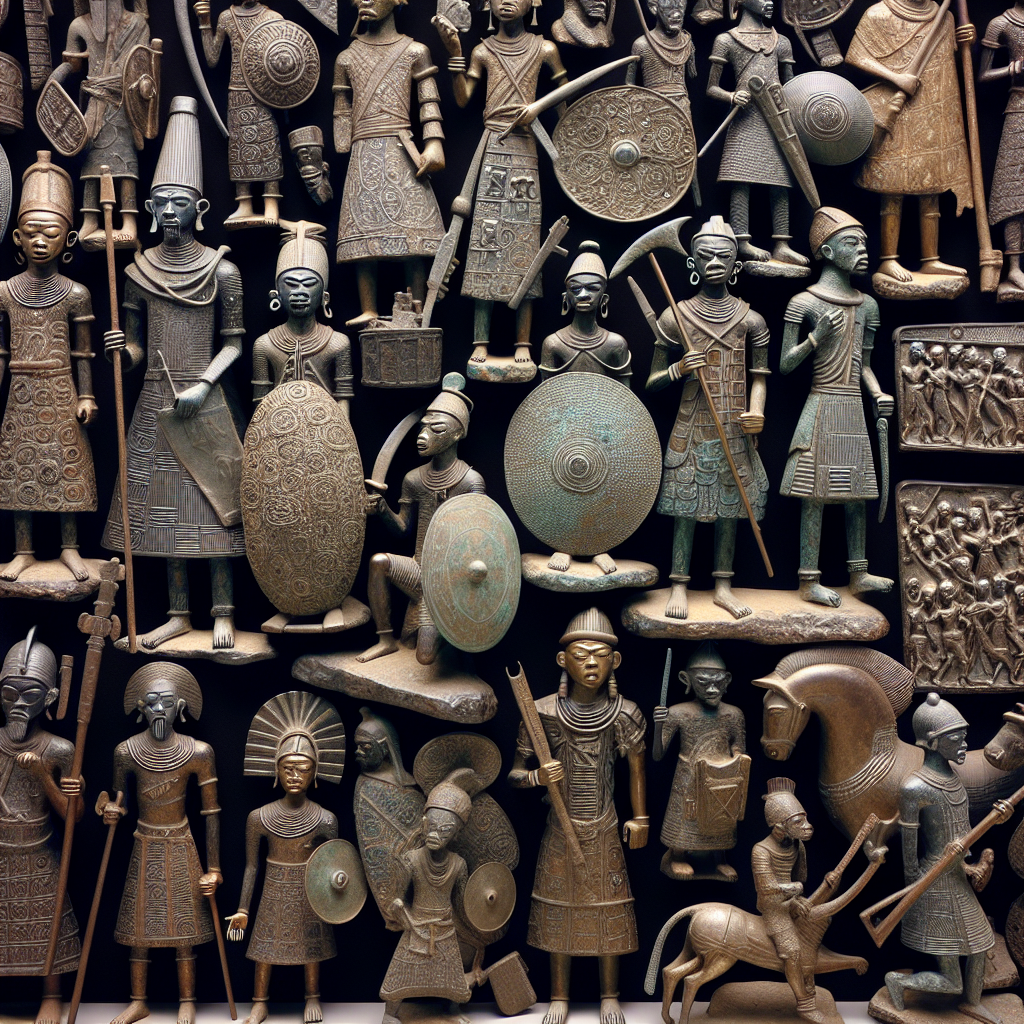
Analyzing the Key Points of the Text:
The key points of the text include the launch of Digital Benin in November 2022, which is a comprehensive database of the Benin Bronzes – brass and ivory objects looted by the British in 1897 from the Kingdom of Benin. The database aims to collect information about these objects scattered in museums around Europe and the United States. The text also mentions the praise received by Digital Benin and its potential impact on the understanding and preservation of the Benin Bronzes.
Future Trends in Preserving Cultural Heritage
Preservation of cultural heritage has become a growing concern worldwide. As seen with the launch of Digital Benin, digital technologies play a crucial role in documenting and preserving cultural artifacts. This trend is likely to continue and expand in the future. Here are some potential future trends related to the preservation of cultural heritage:
1. Expansion of Digital Databases and Online Platforms
Similar to Digital Benin, we can expect the emergence of more digital databases and online platforms that focus on preserving and documenting cultural heritage. These platforms will enable wider accessibility and facilitate research on various artifacts, artworks, and historical objects.
2. Augmented Reality (AR) and Virtual Reality (VR) Experiences
Advancements in AR and VR technologies will provide immersive experiences for people to explore and interact with cultural heritage objects. Virtual exhibitions and tours will allow individuals to engage with artifacts from anywhere in the world, providing a more inclusive and engaging learning experience.
3. Use of Artificial Intelligence (AI) for Restoration and Preservation
AI can potentially aid in restoration efforts by analyzing images or digitized versions of damaged artifacts. It can identify missing parts, suggest reconstruction methods, and simulate the original appearance of the artwork. AI-powered algorithms can also assist in cultural artifact preservation, helping to detect signs of deterioration and recommending appropriate conservation methods.
4. Collaboration and Repatriation Efforts
The case of the Benin Bronzes highlights the need for collaboration between countries and museums to repatriate looted cultural artifacts. In the future, we can expect increased efforts to return stolen objects to their countries of origin, promoting cultural restitution and enabling a more complete understanding of historical narratives.
Predictions for the Cultural Heritage Industry
The cultural heritage industry is poised for significant transformations in the coming years. Here are some predictions for the industry:
1. Shift towards Digital Documentation
The industry will increasingly rely on digital documentation methods to preserve and share cultural heritage. This shift will help mitigate risks associated with physical damage, theft, and loss, while simultaneously increasing accessibility for researchers, students, and the general public.
2. Integrated Public-Private Partnerships
To address funding challenges and promote sustainable preservation practices, we can expect more integrated public-private partnerships in the cultural heritage industry. These partnerships will foster collaborations between government entities, museums, technology companies, and philanthropic organizations.
3. Growing Focus on Ethical Practices and Repatriation
There will be an increased emphasis on ethical practices within the industry. Museums and collectors will face greater pressure to review the origins of their collections and engage in proactive repatriation efforts. This will lead to a more inclusive representation of cultural heritage and strengthen ties between different nations.
Recommendations for the Cultural Heritage Industry
As the cultural heritage industry navigates these future trends, it is essential to adopt practices that ensure effective preservation and accessibility. Here are some recommendations for the industry:
1. Embrace Digital Preservation Techniques
Cultural heritage institutions should prioritize the adoption of digital preservation techniques such as high-resolution scanning, 3D modeling, and metadata tagging. By digitizing collections, preserving fragile artifacts, and making them accessible through online platforms, institutions can safeguard cultural heritage for future generations.
2. Foster Collaboration and Knowledge-Sharing
Museums, academic institutions, and technology companies should foster collaboration and share insights to develop innovative solutions for cultural heritage preservation. Collaborative initiatives can include joint research projects, data sharing, and the creation of open-source tools and resources.
3. Educate and Engage the Public
There is a need to educate the public about the importance of cultural heritage preservation and the ethical implications of collection practices. Museums and cultural institutions should invest in public outreach programs, virtual exhibitions, and interactive platforms that engage audiences of all ages and backgrounds.
Conclusion
The future of cultural heritage preservation holds tremendous potential for positive change. With the advent of digital technologies, increased collaboration, and a shift towards ethical practices, the industry can ensure the safeguarding and accessibility of diverse cultural artifacts. By embracing these future trends and following the recommendations provided, the cultural heritage industry can create a more inclusive and sustainable future.
References:
- BBC News. (2022, November 15). Digital Benin: Benin Bronzes digitisation project launched. Retrieved from https://www.bbc.com/news/world-africa-60452394
- Heritage Daily. (2022, November 18). Digital Benin: A database of the Benin Bronzes looted by the British is launched. Retrieved from https://www.heritagedaily.com/2022/11/digital-benin-a-database-of-the-benin-bronzes-looted-by-the-british-is-launched/143034
